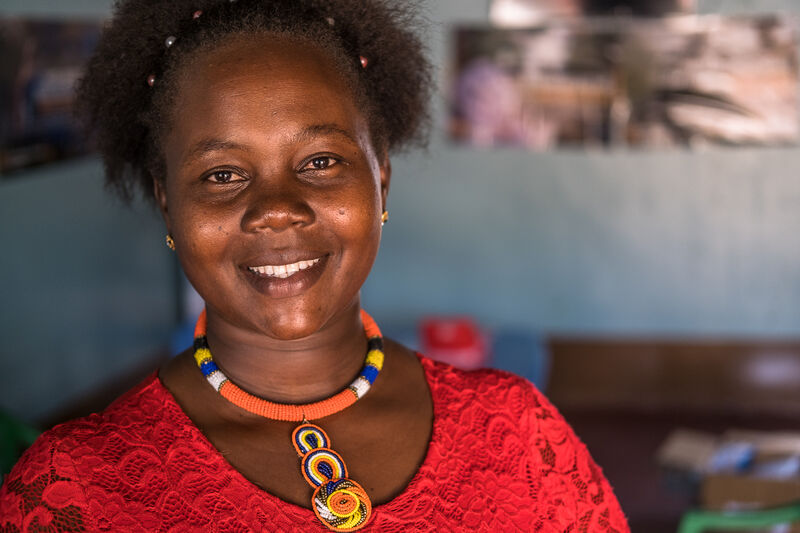

Active in the fight against Female Genital Mutilation (FGM)
Miriam Chebet lives in West Pokot County, Kenya. Trained by Deutsche Stiftung Weltbevölkerung (DSW), Miriam now works with young people in her community, empowering them to stand up for their rights. One of the issues she focuses on is female genital mutilation (FGM). In this interview, she shares her experiences and solutions in the fight against this harmful practice, which still affects millions of women and girls worldwide.
How widespread is FGM in your region?
Miriam Chebet: FGM practice has decreased significantly over recent years due to the government and non-governmental organisations carrying out campaigns against the practice.
How does FGM affect women and girls?
Miriam Chebet: There is of course a lot of pain, as the procedure is often performed without anaesthetic. Heavy bleeding is a frequent consequence and later on, pain during sex. The survivors also often suffer from fistulas. Some girls even die after undergoing FGM.
Do laws exist to protect women and girls against FGM? Do people abide by them? What is being done to ensure girls’ and womens’ safety?
Miriam Chebet: Kenya enacted the prohibition of Female Genital Mutilation Act in 2011 and adopted a revised National Policy for Eradication of FGM in line with Sustainable Development Goal 5 (Achieve gender equality and empower all women and girls). However, despite the move, FGM is still prevalent with most women and girls still being circumcised in homes by traditional circumciser and birth attendants.
In a previous interview with us in 2021 you mentioned that girls are often subjected to FGM in broad daylight. Is this still happening?
Miriam Chebet: The ban in Kenyan law has made it more difficult for perpetrators. In some cases, however, this has meant that girls are simply married off at a very young age and circumcision ends up taking place in their husbands’ homes.
How can FGM be eradicated completely?
Miriam Chebet: We must continue to work to educate girls and women about their right to make decisions about their bodies. We must also try to break with tradition and build on the support of the older generation. Education is of course extremely important, children need to go to school. Projects in schools can also help to raise awareness about FGM.
How do you educate people in your community about the harmfulness of FGM? Who are you targeting with your outreach work? Are there any new ideas and approaches in the fight against FGM?
Miriam Chebet: I am a member of the Community Action Committee. As i have undergone FGM myself, I ensure that information about the effects of FGM and how we can live normally without the practice has reached my people in their villages and churches. We target every person; we don’t separate because everyone needs to get the information. It’s a community thing and we should deal with it as a community.
More facts about FGM in Kenya: The prevalence of FGM is higher among girls with no education (56 per cent) compared to those with a qualification higher than secondary education (6 per cent). The prevalence of FGM is higher in rural areas, where the rate is 18 per cent, compared to 10 per cent in urban areas. The prevalence of FGM in Kenya has fallen from 21 per cent (2014) to 15 per cent. In West Pokot County, the figures have fallen drastically: From 74 per cent (2014) to 44 per cent (2022) – although this means that FGM still affects almost half of all women between the ages of 15 and 49 in the region. In West Pokot, the average age of girls undergoing FGM is nine. (Source: Kenya Demographic and Health Survey, 2022)


Comments